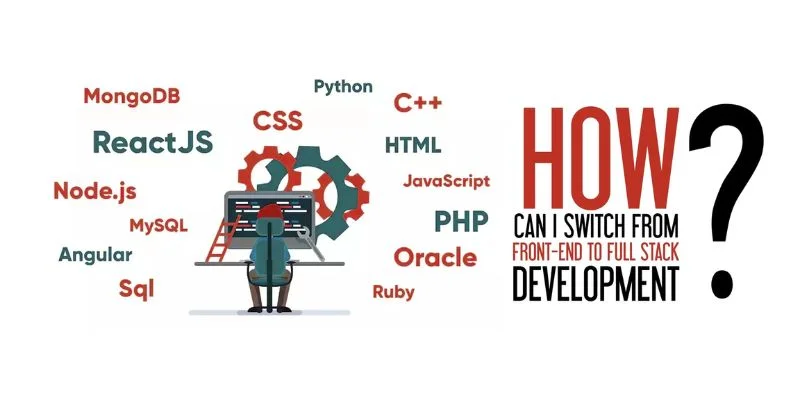
Transitioning from a frontend developer to a fullstack developer is an exciting step that opens up new opportunities in the tech world. If you’re already skilled in frontend technologies and thinking about broadening your skills, becoming a fullstack developer might be the next step. Many developers choose to take a Full Stack Developer Courses in Bangalore to help with this transition. It’s a journey that requires learning backend technologies, databases, and server management. This blog will guide you on how to make the shift smoothly and become a versatile fullstack developer.
What is a Fullstack Developer?
A fullstack developer is someone who can handle both the frontend and backend of an application. As a frontend developer, you already focus on building the user interface – what people see and interact with. But to be a fullstack developer, you need to work on the backend too, which means dealing with servers, databases, and how data flows within an application.
Assess Your Current Skills
Before you dive into learning backend technologies, take a moment to evaluate your current skills. As a frontend developer, you’re likely skilled in HTML, CSS, and JavaScript. You might also be familiar with frameworks like React, Angular, or Vue.js. If you’re considering a Full Stack Developer Training in Marathahalli, your knowledge in these areas will form a solid foundation as you begin to learn backend development.
Identify the areas where you need improvement. Since JavaScript is already a familiar language for most frontend developers, learning Node.js, which allows you to write server-side code in JavaScript, could be a good starting point. Otherwise, you can explore other popular backend languages like Python, Ruby, or PHP.
Learn Backend Technologies
To transition into a fullstack developer role, you need to learn a few essential backend skills. Here’s what you need to focus on:
- Server-Side Programming: Backend development involves writing code that runs on the server. Node.js, Python, and Java are popular choices. If you’re comfortable with JavaScript, Node.js can be a great option because it lets you use the same language for both the frontend and backend.
- Databases: Databases store and organize the data that your application uses. There are two types of databases you’ll encounter:
- Relational Databases like MySQL and PostgreSQL, which use structured tables.
- NoSQL Databases like MongoDB, which store data in more flexible formats, such as documents.
- A Fullstack course in Bangalore will likely cover how to interact with both types of databases and how to write queries to store, retrieve, and manipulate data.
- APIs (Application Programming Interfaces): APIs allow different parts of an application to communicate. As a fullstack developer, you’ll need to know how to create and use APIs, especially RESTful APIs. These allow your frontend to request data from the backend and display it to users.
- Version Control: Tools like Git are essential for managing your code, especially when working on larger projects with teams. You may already use Git for frontend work, but as a fullstack developer, you’ll be working with more complex projects that require branching, merging, and collaborating on both frontend and backend code.
Start Building Fullstack Projects
The best way to apply what you’re learning is to build fullstack projects. Start small, and then work your way up to more complex applications. Here are a few ideas:
- To-do List Application: Create a basic app where users can add, edit, and delete tasks. This will teach you how to manage both the frontend and backend, including data storage.
- E-commerce Website: Build a simple online store where users can browse products, add items to their cart, and make purchases. This will give you experience in managing databases, user authentication, and payment gateways.
- Blog Platform: Create a platform where users can write, edit, and delete posts. This project will help you learn how to manage databases and create APIs that connect the frontend and backend.
As you build these projects, you’ll gain hands-on experience in both areas of development. If you’re enrolled in a Programming Languages Institutes in Bangalore, you’ll likely get guidance on how to create and improve these projects as part of your learning.
Keep Learning and Stay Updated
The world of technology is always changing, and fullstack developers need to stay updated with the latest trends. Here’s how to keep learning and stay ahead:
- Online Courses: There are many online platforms that offer additional learning resources. You can find tutorials on new frameworks, backend languages, or database management tools.
- Developer Communities: Join forums and online communities where you can connect with other developers, ask questions, and learn from others’ experiences. Engaging with the community helps you stay updated with new tools and trends.
- Practice, Practice, Practice: Keep working on personal projects, experimenting with new tools, and challenging yourself. Building a portfolio of fullstack projects will not only help you improve but also showcase your skills to potential employers.
Transitioning from frontend to fullstack development is a rewarding process that expands your capabilities and job opportunities. By learning backend technologies, databases, and APIs, you can become a more versatile developer who can manage entire projects from start to finish.With dedication and continuous learning, you’ll be well on your way to mastering fullstack development and becoming a sought-after professional in the tech world.
Also Check: Full Stack Developer Interview Questions and Answers